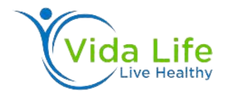Migraine prevention techniques aim to decrease both the frequency and severity of migraine attacks. These may include medications, medical devices, complementary or alternative treatments and complementary therapy approaches – they can even be combined with acute migraine treatment methods for maximum effectiveness.
Many conventional preventive drugs have a long record of effectiveness, such as beta blockers, tricyclic antidepressants and certain anti-epileptics. Some combinations (known as polytherapy ) of these medications are used to increase tolerance and efficacy.
Avoiding triggers
There’s no cure for migraines, but preventive medication and strategies can reduce how often they strike. Preventive measures tend to be less expensive and invasive than treating attacks once they start.
Many factors can trigger migraine attacks. These include food, alcohol, fatty foods such as aged cheeses and sausages; additives such as MSG and nitrates found in hot dogs; stress; lack of sleep; skipping meals; certain smells or sounds; bright lights/glare and weather changes to name but a few.
Maintaining a headache diary can help you pinpoint your triggers. Write down each date, symptoms and duration of every headache in order to establish which are responsible and any relief methods available to you. Other lifestyle changes that can reduce migraine attacks include getting enough restful sleep each night; exercising moderately; cutting out caffeine consumption and smoking cessation altogether as well as sticking to regular sleeping times each night as well as staying hydrated by drinking plenty of water each day.
Avoiding over-the-counter pain relievers
Migraines can be caused by a wide range of triggers, from stress and certain foods/additives, caffeine withdrawal, weather fluctuations or light/noise. A migraine diary can help identify your individual triggers and find effective preventive treatments tailored specifically to you.
Some lifestyle modifications may help lower both the frequency and severity of migraine attacks. Consistency is key in terms of diet and exercise – regular aerobic activity has proven useful as preventive medication; yoga and high intensity interval training (HIIT) have both proven helpful too.
Over-the-counter pain relievers may be problematic for those living with migraines as their misuse can lead to dependency issues and analgesic-rebound headaches. If you find yourself using over-the-counter medications more than two to three times weekly, consult your healthcare provider about prescription treatments as soon as possible.
Over-the-counter migraine prevention medications such as beta blockers such as metoprolol, propranolol and timolol may be effective. But as not every patient finds these effective drugs effective for them, and some can have negative side effects as well, it’s essential that you work closely with your physician in finding what will work best.
Keeping a migraine diary
A migraine diary is an effective way of keeping track of your headache frequency and triggers. Additionally, it allows you to track how effective preventive medication has been for you. A notebook or journal are great tools for this, while apps offer convenient solutions as well. Be sure to update daily so as to capture accurate information; detailed entries allow for quicker identification of patterns and triggers.
Make sure to note the type of pain (throbbing, piercing or sharp), its location and severity. Also write down what happened in the days preceding a headache to establish any possible triggers – high stress levels or weather changes could be triggers; aura symptoms should also be recorded here. A diary can also help women diagnose menstrual migraines. Finally, keep notes of treatments you have tried such as ice packs or medication that has helped.
Taking medication
As far as migraine prevention goes, taking medication as soon as symptoms appear is essential. Next step should be identifying and avoiding possible triggers of migraine attacks; such as aged cheeses, caffeine and alcohol consumption as well as skipping meals, stress and weather changes being the primary ones. Recognizing prodromal symptoms a few days or so prior to migraine attacks such as constipation, mood changes, cravings for certain foods, stiff necking or increases thirst or urination is also key.
Prescription medications such as propranolol can be effective at preventing migraines, though combination use with other drugs to increase effectiveness and minimize side effects may be preferable. Other treatments like biofeedback or relaxation training may help decrease stress and anxiety levels that contribute to migraine attacks; lastly, maintaining a regular sleep and eating schedule may also help avoid migraine attacks.

